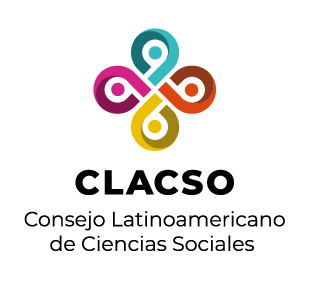Red de Bibliotecas Virtuales de Ciencias Sociales en
América Latina y el Caribe

Por favor, use este identificador para citar o enlazar este ítem:
https://biblioteca-repositorio.clacso.edu.ar/handle/CLACSO/145366Registro completo de metadatos
| Campo DC | Valor | Lengua/Idioma |
|---|---|---|
| dc.creator | Andrés Arias de la Cruz | - |
| dc.creator | Gisela Domínguez Barrera | - |
| dc.creator | Eleazar Morales Vázquez | - |
| dc.date | 2019 | - |
| dc.date.accessioned | 2022-03-29T14:21:13Z | - |
| dc.date.available | 2022-03-29T14:21:13Z | - |
| dc.identifier | http://www.redalyc.org/articulo.oa?id=44759854003 | - |
| dc.identifier.uri | http://biblioteca-repositorio.clacso.edu.ar/handle/CLACSO/145366 | - |
| dc.description | One of the shortcomings commonly associated to Content-based Instruction is the scarce attention teachers give to the linguistic aspects of the target language. In Mexico there are 33 public universities offering Bachelors of Arts (BAs) in English language teaching in which content courses are taught; however, very little is known about how these courses are taught and whether teachers focus on linguistics aspects of the target language or not. This article shows the results of a study carried out aiming to determine if Form-Focused Instruction (FFI) was implemented in two Content Courses at a Southeastern Mexican University as well as the type of FFI implemented by teachers. Through the use of a qualitative method, based on a descriptive case study, two teachers teaching content subjects to two groups of students (n=55) in a Mexican undergraduate programme were observed. After fifteen hours of observation, lessons were analysed using the Communicative Orientation of Language Teaching (COLT) Scheme. The results showed that the participant teachers implemented only reactive FFI while no evidence of proactive FFI was found. The linguistic features attended to were mostly vocabulary, pronunciation while grammar features were barely covered. There is not a true integration of content and language in these two CB courses. CB teachers need to make use of proactive FFI to direct students attention to less salient features of the target language. | - |
| dc.format | application/pdf | - |
| dc.language | en | - |
| dc.publisher | Universidad de Costa Rica | - |
| dc.relation | http://www.redalyc.org/revista.oa?id=447 | - |
| dc.rights | Revista Electrónica "Actualidades Investigativas en Educación" | - |
| dc.source | Revista Electrónica "Actualidades Investigativas en Educación" (Costa Rica) Num.1 Vol.19 | - |
| dc.subject | Educación | - |
| dc.subject | Content-based instruction | - |
| dc.subject | teaching methods | - |
| dc.subject | english teaching | - |
| dc.title | Form-focused instruction (FFI) and language features attended to during content-based instruction (CBI) lessons at a southeastern Mexican university | - |
| dc.type | artículo científico | - |
| Aparece en las colecciones: | Instituto de Investigación en Educación - INIE/UCR - Cosecha | |
Ficheros en este ítem:
No hay ficheros asociados a este ítem.
Los ítems de DSpace están protegidos por copyright, con todos los derechos reservados, a menos que se indique lo contrario.